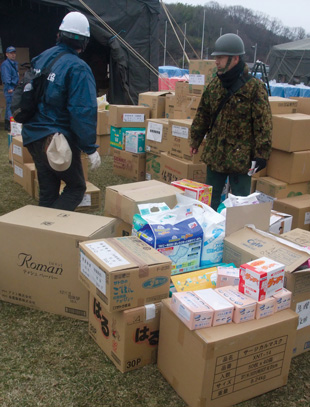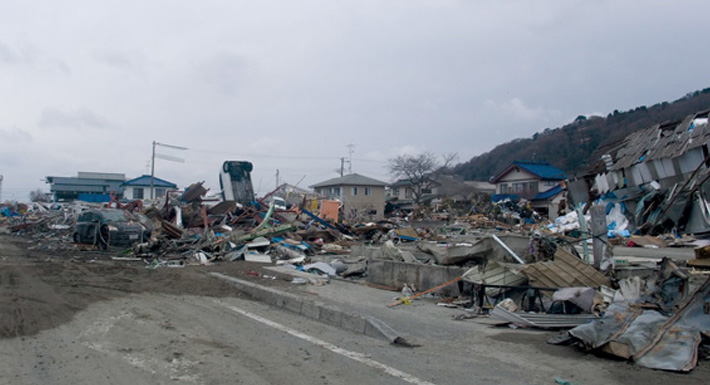While the news media abroad and in Japan have been shifting their attention from the devastation of the 9.0 magnitude earthquake and the 10 meter tsunami that hit Japan’s northeastern region (killing over 10,000 people, leaving thousands more unaccounted for and displacing half a million people in its wake) and toward the ticking bomb of the malfunctioned nuclear reactors in Fukushima Prefecture, goodwill organizations across the nation have been amassing their forces to gather help for those taking shelter at the evacuation centers in the areas affected by the tsunami.
Here in Tokyo, much like other parts of the nation, groups of volunteers line up in front of train stations and shopping malls, shouting out their rhetoric enthusiastically, compelling those walking by to drop monetary donations into the boxes labeled ‘Aid relief for the Tohoku victims’.
Others are taking more direct action, leaving the comfort and safety of the city to venture north, offering whatever help they can.
Testu Kishiba, originally from Okinawa (and a former member of the French Foreign Legion) now runs Transporter Tokyo, a delivery and moving company. He filled his truck with food, water and gasoline collected quickly by volunteers and headed to the disaster zone.
“We just drove until we found people—we looked for the Jieitai (Self Defense Force) base camp and stopped to help,” he says.
Kishiba made his first journey with Japanese journalists to Natori city then returned to Tokyo days later to stock up before traveling to Ishinomaki in Miyagi prefecture and Rikuzentakata in Iwate prefecture—two of the towns on Japan’s northeastern coast worst hit by the tsunami.
“It was terrible. The smell was really bad, people are fighting just to maintain basic hygiene. Everyone is living so close together, often in one room—they are all getting sick,” he says.
Big cities like Sendai received aid almost instantly as they were easier to access, but several weeks later smaller, more isolated villages and towns are fighting to clothe and feed their residents. As of today some 130,000 people are still missing.
 “Bodies still lie under the collapsed buildings, but they can’t just remove the rubble—they want to respect the dead,” Kishiba explains.
“Bodies still lie under the collapsed buildings, but they can’t just remove the rubble—they want to respect the dead,” Kishiba explains.
Stories from the disaster zone confirm that human help is now the most needed and most scarce resource. After the initial earthquake saving lives was a priority, so lots of money was needed to get the relief effort moving—but in the days that followed basic supplies such as clothes and food became more important. “Volunteers are still needed to find the dead, specialists like medical doctors are in short supply and survivors have no access to even basic medicine,” Kishiba says.
Though many of us have given money and offered help, in the northeast of Japan people are still clinging on, trying to rebuild their shattered communities one day at a time.
“Many people sent their kids’ shoes and clothes, which was a big help, but we didn’t see too many people from Tokyo—we were on our own.”
by Mary Rudow
All photos by Testu Kishiba.
Updated On July 17, 2013








